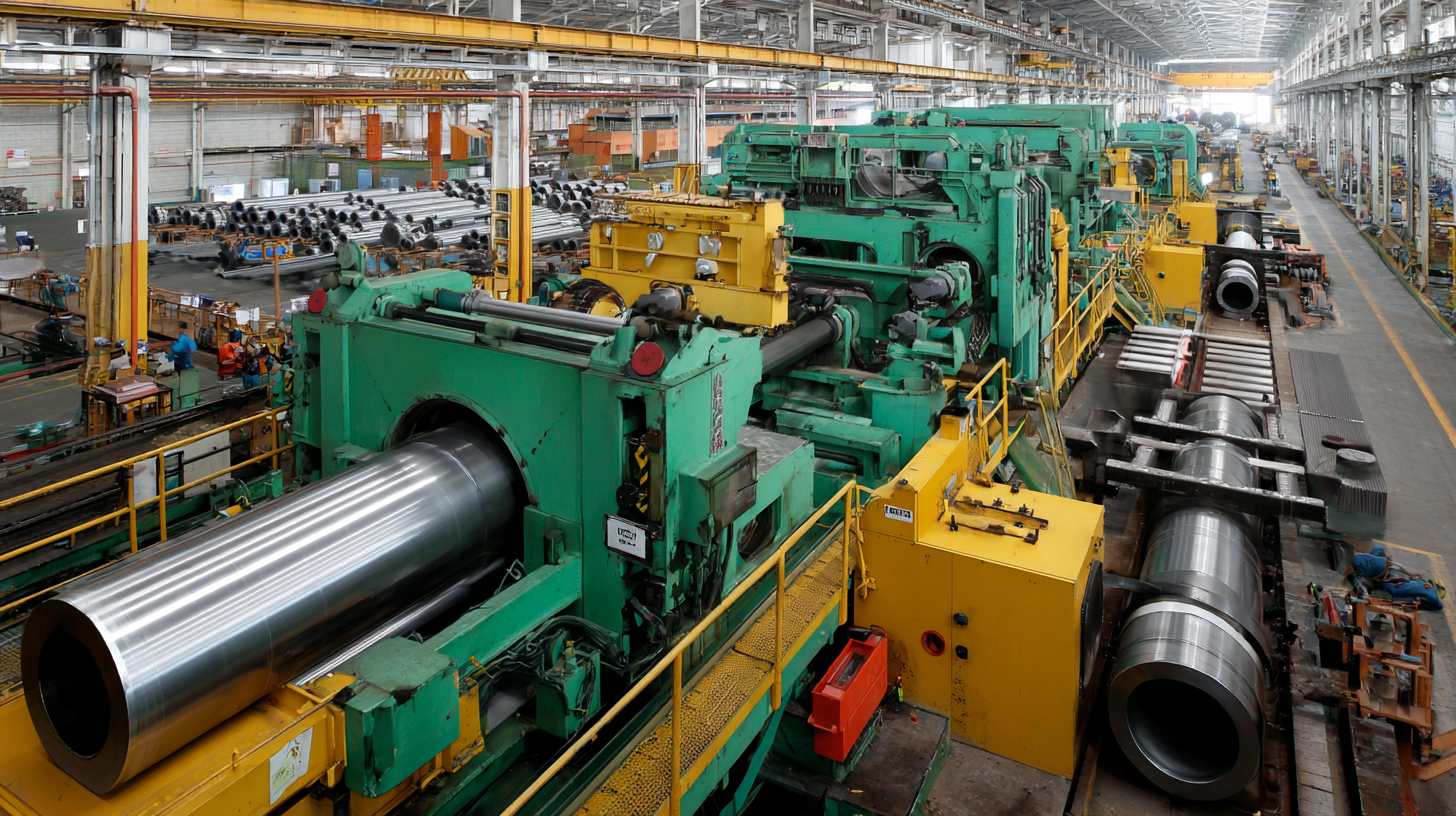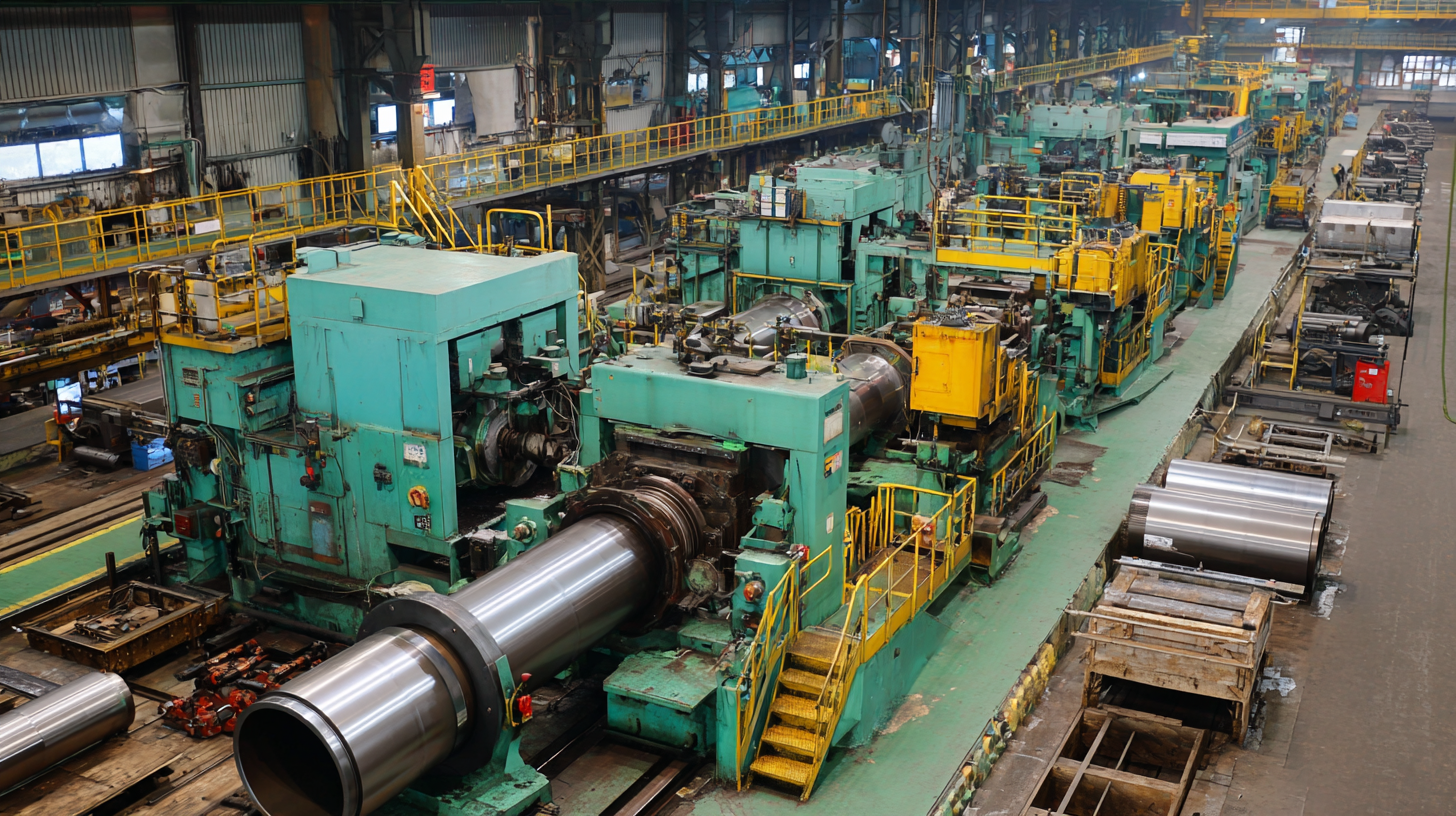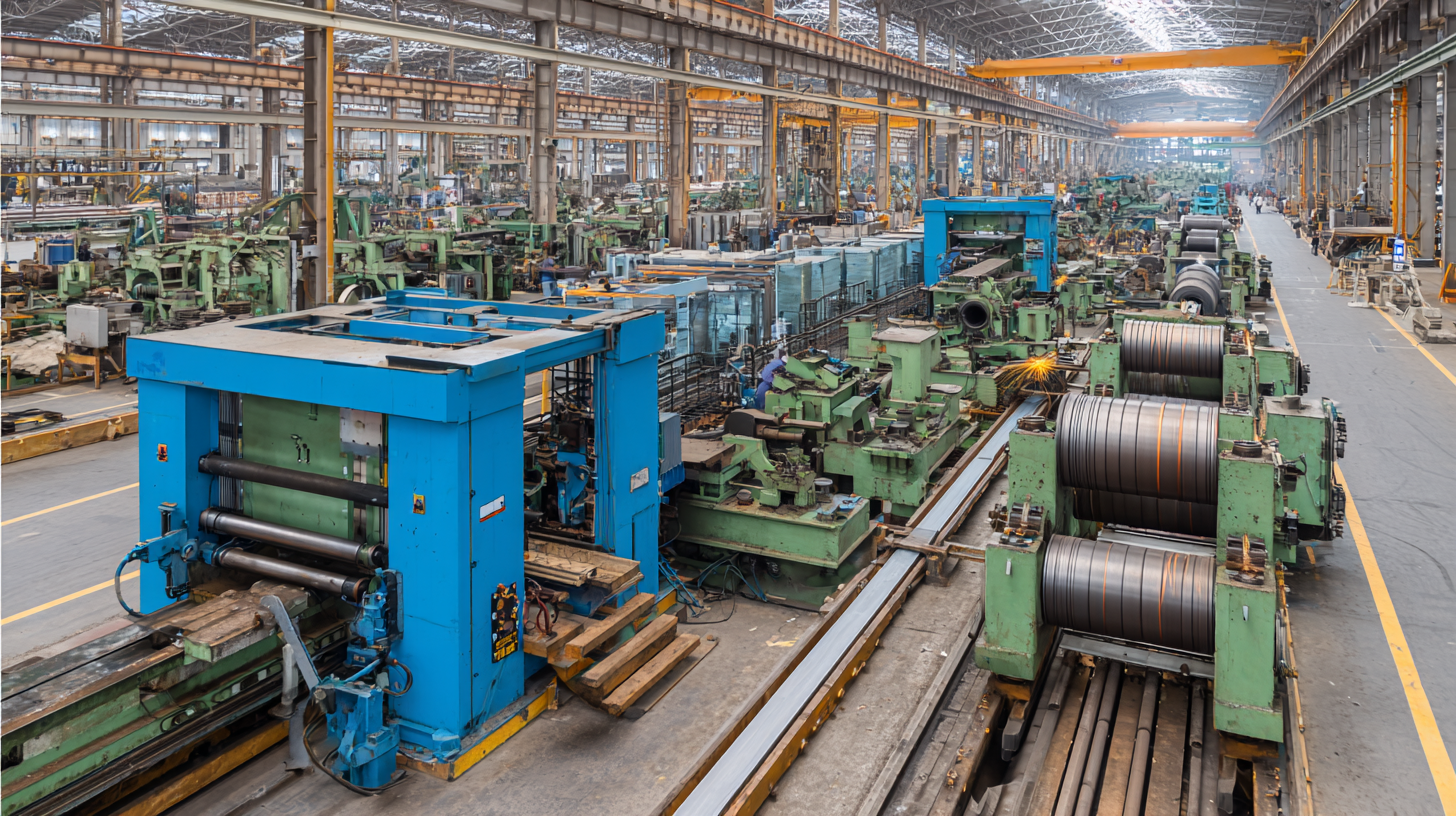
As we look towards 2025, the steel pipe manufacturing industry is poised for significant evolution, driven by emerging technologies and increasing demand for high-quality products. According to a recent report by Market Research Future, the global steel pipe market is expected to grow at a CAGR of 5.02% from 2020 to 2027, highlighting the critical need for manufacturers to adopt innovative practices and state-of-the-art machinery.

Central to this transformation is the implementation of High Quality Steel Pipe Machines Tube Mill, which are crucial for enhancing production efficiency and ensuring product excellence. Industry leaders must stay abreast of these trends, focusing on sustainable practices, automation, and modernization to remain competitive in an increasingly complex market.
This blog will discuss the top trends shaping the future of steel pipe manufacturing and provide an essential checklist for those aiming to lead the industry forward.
The steel pipe manufacturing industry is on the brink of transformation as emerging technologies take center stage in 2025. Automation and artificial intelligence are leading this change, with companies increasingly deploying factory robots to streamline production processes. These advancements not only enhance efficiency but also enable higher precision in manufacturing, which is critical in meeting the growing demands of various sectors, including construction and oil and gas.
Additionally, additive manufacturing, commonly known as 3D printing, is revolutionizing how steel pipes are produced. This innovative technique allows for the creation of complex components that traditional methods cannot easily replicate. It provides the flexibility to create customized solutions on-demand, reducing waste and accelerating project timelines. As manufacturers embrace these technologies, they will not only improve their operational capabilities but also open up new avenues for growth and development within the industry, paving the way for a more sustainable future.

As the steel pipe manufacturing industry looks toward 2025, sustainability is emerging as a pivotal trend that will reshape production methods and business strategies. With increasing environmental concerns, industry leaders are prioritizing eco-friendly practices that reduce waste and carbon emissions. Innovations in recycling technology, such as closed-loop systems for reprocessing scrap steel, are gaining traction, enabling manufacturers to minimize their environmental footprint while maintaining efficiency.
Moreover, the adoption of renewable energy sources is becoming a standard practice within the steel manufacturing sector. Companies are investing heavily in solar and wind energy to power their operations, thus decreasing reliance on fossil fuels. The shift not only addresses regulatory demands but also appeals to a more environmentally conscious consumer base. Furthermore, the future of steel pipe manufacturing will likely see a rise in the use of alternative materials and processes, such as the development of green steel, which utilizes hydrogen and biofuels in production, promoting a circular economy in the steel industry.
As we look towards 2025, the global steel pipe manufacturing market is set to undergo significant transformations, driven by both opportunities and challenges. According to a recent report from the Global Steel Pipe Association, the market is anticipated to witness a compound annual growth rate (CAGR) of approximately 4.5% from 2023 to 2028. This growth is primarily fueled by the increasing demand in the oil and gas sector, particularly in emerging economies where infrastructure projects are on the rise.

However, industry leaders must navigate several challenges that could impede progress. Fluctuations in raw material prices, exacerbated by geopolitical tensions, are a critical concern. The World Steel Association highlights that steel prices surged by nearly 20% in the last year alone, which can significantly impact profit margins. Additionally, environmental regulations are becoming more stringent; firms are being urged to adopt sustainable manufacturing practices. The transition to cleaner technologies is essential, as data from the International Energy Agency suggests that the steel industry is responsible for approximately 7% of global CO2 emissions. Addressing these challenges while seizing growth opportunities will be crucial for stakeholders in the steel pipe manufacturing sector.
In the rapidly evolving steel pipe manufacturing industry, leaders must cultivate essential skills and strategies to stay competitive. Understanding technological advancements in production processes is crucial. Embracing automation and data analytics can significantly enhance operational efficiency, reduce costs, and improve product quality. Industry leaders should invest in training programs that equip their workforce with the necessary skills to handle advanced manufacturing technologies.
Tip: Regularly assess employee skill levels and provide targeted training sessions on automation tools and data analysis techniques. This ensures that your team is equipped to leverage these advancements effectively.
Another key strategy involves fostering innovation through collaboration. Engaging with academia and technology partners can lead to the development of cutting-edge solutions that address industry challenges. Creating a culture of continuous improvement encourages employees to propose innovative ideas that can streamline operations or reduce environmental impacts.
Tip: Host brainstorming sessions that include cross-functional teams to encourage diverse perspectives. Implementing a reward system for innovative contributions can also motivate employees to think creatively and actively participate in the growth of your company.
In the steel pipe manufacturing industry, innovative supply chain solutions are becoming increasingly essential for maintaining a competitive edge. As highlighted in recent analyses, companies are now recognizing that enhancing the efficiency and sustainability of their supply chains can directly impact their market positioning. For instance, the potential growth in demand for low-carbon steel is projected to rise substantially as nations strive to meet climate goals, thereby prompting firms to invest in advanced manufacturing techniques. Reports indicate that embracing low-carbon innovation not only meets regulatory requirements but also offers a sustainable competitive advantage, particularly for manufacturers looking to improve their production processes.
Moreover, with the unfolding dynamics of global value chains, industry leaders must adopt new strategies to mitigate risks highlighted during the COVID-19 pandemic. Developing resilient supply chains that can withstand disruptions involves leveraging innovative technologies and collaboration across the entire supply chain. Research emphasizes that future-proofing supply chains by focusing on transparency and adaptability can significantly enhance competitiveness. As the market evolves, manufacturers who prioritize innovation and sustainability within their supply chains will be better positioned to thrive in the emerging landscape of the steel industry by 2025.
| Trend | Description | Impact on Industry | Action Items for Leaders |
|---|---|---|---|
| Automation in Manufacturing | Increase in robotics and AI to streamline production processes. | Enhanced efficiency and reduced operational costs. | Invest in automation technologies and train workforce. |
| Sustainability Practices | Adoption of eco-friendly materials and processes. | Compliance with environmental regulations and improved public image. | Develop a sustainability roadmap and engage stakeholders. |
| Digital Supply Chain | Implementation of IoT and data analytics for supply chain optimization. | Increased visibility and responsiveness in operations. | Leverage data analytics to enhance decision-making. |
| Customization and Flexibility | Shift towards tailored products to meet customer needs. | Greater customer satisfaction and competitive differentiation. | Invest in flexible manufacturing systems and R&D. |
| Advanced Materials | Development of high-performance materials for enhanced durability. | Improved product lifespan and reduced maintenance costs. | Collaborate with material researchers and invest in innovation. |
